This week on the Fangirl Initiative, in honor of the site’s new design, we’ve been reexamining the idea of fandom: the entire pocket of culture that has grown around fictional stories: the stories that nearly every reader or moviegoer has at least heard of, if not experienced personally. Whether it’s Star Wars, The Hunger Games, or The Lord of the Rings, the mention of a title can invoke either excitement and nostalgia… or irritation. After all, a person can only hear, “What!? You haven’t watched/read it!? But you’ve got to!” so many times before wanting to purposefully not watch or read out of spite (I know I have).
So of the many classic fantasies merging in and out of the spotlight every year, I thought for today I would take a spoiler-free look at one of the most popular, recent, and somewhat controversial book-and-movie sagas of the past decade.
Hogwarts, A History
After several years of scribbling manuscripts on restaurant napkins and struggling to make ends meet, Joanne Rowling of the United Kingdom finally caught a break and released her manuscript for a fiction series with Bloomsbury Publishing in 1997.
Harry Potter and the Philosopher’s Stone, released in 1997, was renamed in the United States as the “Sorcerer’s” stone, because Scholastic Press didn’t think American readers would understand the magical connotations of a “philosopher’s” stone (though the name is, in fact, drawn from mythology).
Rowling’s work soon skyrocketed like few other sagas in the past few decades had, setting records as some of the fastest-selling books in history — and proving that the thickness of a book wouldn’t deter children if a story was captivating enough.
Many fictional series have attempted to follow in its footsteps (Twilight and The Hunger Games were the next major titles to develop followings [and enemies] of their own), but the children of the 90s latched on to the characters of Harry Potter and grew up with them. (In our house, my older sister was the same age as Book Harry — but I wasn’t too bothered when I at least turned out to be the same age as Movie Harry.)
By the release of the fourth book in 2000, fans around the world were hosting partied to celebrate its midnight release — something unheard of in the literary world. The books earned multiple bestseller awards and made Rowling the first (and so far, only) billionaire author. They were, in order:
1. Harry Potter and the Philosopher’s Stone
2. Harry Potter and the Chamber of Secrets
3. Harry Potter and the Prisoner of Azkaban
4. Harry Potter and the Goblet of Fire
5. Harry Potter and the Order of the Phoenix
6. Harry Potter and the Half-Blood Prince
7. Harry Potter and the Deathly Hallows
 |
| (Said the blogger who put an unnecessary apostrophe after "Americans"...) |
As the series progressed, its characters grew from early adolescence to adulthood, and thus they struggled with greater, graver challenges along the way.
The fourth book in particular, The Goblet of Fire, was protested by some parents to be suddenly too dark for their Potter-loving children; the child protagonists were losing their innocence by fighting physical battles, keeping secrets, being betrayed, and combating dark magic (for more details, see the “Ratings” section). This added fuel to the fame of some religious audiences that had already been boycotting the series for some time: they claimed that the novels encouraged children to dabble in magic because the settings mixed fantasy with the modern world, and therefore somehow promoted actual witchcraft (also to be discussed in the “Ratings” section). But those voices, though noteworthy, couldn’t stop what had already been started.
In 1998, just one year after the release of Philosopher’s Stone, Rowling sold the film rights to Warner Bros. and the first film was released in 2001 under director Chris Columbus (of Home Alone and Mrs. Doubtfire). The movie and its successor, The Chamber of Secrets, were highly-praised and very nearly identical to the books they were based off of. But after the release of the second film, Columbus handed over the film series to other directors including Alfonso Cuarón, Mike Newell, and David Yates (who divided The Deathly Hallows into two movies. Despite the uproar from indignant fans, the decision was made for the sake of remaining loyal to the extremely-detailed books. Whether or not it was a worthwhile decision may vary, depending on whom you ask).
Starting with Cuarón, the visionary new directors gave the films a bit of a mood makeover that received mixed reviews. Rather than functioning as a sort of page-to-screen experience, the later films appeared more like abbreviated or stunted rearrangements of Rowling’s (often overly-detailed and entangling) plots. However, for what the movies lacked in loyalty, they made up by engaging the audience with more comedy and a chance to see more of the Wizarding World and its culture. For example, rather than force the audience to focus on the main characters as they spoke, Cuarón and others would pull the camera away and let it wander during the conversation — often for comedic effect.
In fact, he often collaborated with Rowling about his work, and he even had an idea for a talking shrunken head that she vocally praised, wishing that it could have been put into the books. She and Cuarón gave the child actors more flexibility with their roles, and as a result the characters gained more scope and depth. For example, Harry Potter was no longer the always-right, fearless-martyr that he had seemed to be in the first two films: he was more of the stubborn awkward teenaged boy that readers knew and loved. Even as the main character, sometimes he wasn’t immune to a little slapstick at his own expense.
While a good portion of the readers complained about the change in the later films, even more fans loved the saga’s makeover. While Colombus had captured the dialogue and plots of the first two books perfectly, he was trying so hard to be loyal to the books that his final products ended up almost sort of stiff: Cuarón went out on a limb and altered the stories he was directing… but he captured more of the wacky British humour and whimsy that had filled Rowling’s books to the brim.
So on the one hand, audiences who never read the books didn’t get to experience the scope of Rowling’s writing by watching the later movies… but said movies seemed to point viewers towards the books — both for answers and for more of the fun and comedy that was being had in the theater.
Since the completion of the book and film series, the Harry Potter franchise has branched out with a few more short books: “textbooks” from Harry’s school curriculum, including Fantastic Beasts and Where to Find Them (rumored to be in the works as a feature film!) and Quidditch Through the Ages; and the acclaimed collection of Wizarding nursery rhymes and fairy tales, The Tales of Beetle the Bard. Some fans are even begging Rowling to write a “Marauders” series, which would follow the childhoods of a different gang of wizarding students: the generation that would grow up to parent Harry and his friends. And she has, in fact, at least thought about the idea (judging from this snippet she jotted down at some point).
Even if no more books are to be expected for now, the fans have plenty to satisfy them in the meantime: for one, Rowling has been heading up a popular online game known as Pottermore.com, where fans can explore more of her books for themselves, ‘take classes’ at Harry’s magical boarding school, and even get sorted into one of the school’s four houses (see “The Plot” for details) with an extremely-detailed personality quiz… though many fans have their own abbreviated versions of the quiz, too. But for enthusiasts seeking a less-digital experience, one of the series’ most popular (and lucrative) developments is a jaw-dropping theme park in the Universal Orlando Resort in Florida.
It includes replicas of multiple buildings (including delectable sweet shops), a few recreated sections of modern-day London, and a fully-functional steam-engine train.
Harry Potter spent over a decade in the spotlight of popular culture, and it would seem that the series is destined to remain a beloved classic for years to come.
The Plot
The books center around an orphan named — you guessed it — Harry Potter, who has grown up under the borderline-abusive supervision of his aunt and uncle. While the adults spoil their own son extensively, Harry is nearing his eleventh birthday and has gotten quite used to a very unpleasant, un-extraordinary life.
However, a strange turn of events occurs when he receives a mysterious letter — which his aunt and uncle promptly destroy. But even more letters begin arriving, until finally a strange man appears and gives Harry some startling news (which is, of course, as startling to us as the news of who Darth Vader really is in Star Wars).
As it turns out, there’s an entire hidden world of magical people and creatures that Harry belongs in — and he’s been invited to learn how to control his magical powers at a boarding school called Hogwarts.
Despite the squawking of his surrogate family, Harry decides to attend. As a result, he’s swallowed up in an enchanting [pun intended and literally relevant] world of spells, potions, and broomsticks.
There’s a lot for him to learn — and not just about magic. Without his aunt and uncle hovering around his new school, he can finally make real friends… and real enemies. Hogwarts is divided into four houses of students, sorted by their personality qualities.
- Gryffindor houses the bravest (and sometimes more rash) students.
- Hufflepuff students usually avoid conflict and appear almost cowardly at first, but will loyally stand up for what’s right if necessary.
- Ravenclaw students seek knowledge and wisdom above all else, but can occasionally be aloof and prideful.
- Slytherin students value cunning and leadership, but can resort to Machiavellian ends-justify-the-means actions.
And as Harry delves deeper into the magical world, he discovers that there are both good and bad secrets to be uncovered: for one thing, he’s strangely famous to all witches and wizards, though he doesn’t know why; and it may have something to do with a war that erupted when he was an infant… a war started by the same wizard who massacred his parents: Lord Voldemort.
Starting with his first whirlwind of a school year at age eleven, the saga follows Harry through the next seven years of his life as he and his friends face the challenges of puberty and the challenges of a looming conflict in the magical realm… a second war that once again seems to be centered around Harry and Voldemort.
The Appeal
People are drawn to Rowling’s work for all kinds of different reasons: for one, she’s simply an entrancing writer. She created a unique modern fantasy that’s mesmerizing just in itself.
And not only does she wrap up corky British humor and genuinely unique characters in every page; she is, without a doubt, a master of classic mystery plots — the like of which can only be found in stories like Clue or Murder On the Orient Express. If there’s an ominous man with a purple cloak lurking in the corner of a shop, she won’t say so. Rather, she’ll mention “the old lady whose purse would bark whenever she brushed elbows with a stranger” and “the two black owls that sat perched in the rafters,” and “the green-haired clerk blowing bubbles with enchanted gum that actually floated about the room to pop in the ears of anyone who wasn’t looking — particularly a jumpy man in the corner who would wave the bubbles away with his purple cape.” * Rowling doesn’t warn us that certain objects or occurrences will be relevant in the future: she rather allows our attentions to wander — as they often do in real life — between various (and often irrelevant) details that may very likely mean nothing… or perhaps everything.
* (And no, those aren’t direct quotes from the books; just spoiler-free examples.)
Rowling had the events of the entire series planned out before she started: and even though attentive readers will be able to notice the slight evolution of her writing style from book to book, each builds on the foundations of the last. But her plots aren’t the only things to make progress: her human characters grow, too. Part of the reason why an entire generation latched onto Harry Potter was because they were literally growing up alongside Rowling’s characters, and they were searching for answers about the future just as much as Harry and his friends were. Rowling gave her audience a universe where they could identify with at least one of the four Hogwarts houses and find a sort of family: a place where they could belong, no matter their quirks.
She examines not just a world of magic, but the world of normal, struggling teenagers as they search for their identity through friendships, relationships, and the wisdom of their mentors.
The Rating
As mentioned previously, the series received a lot of flack from some parents — both for its various spiritual themes, and also for its noticeably darkening mood after the release of the fourth book. As a result, I will be adding a new category to this section today: Spiritual Content. Because while the Harry Potter stories — from Book 1 to Movie 8 — generally fall within the rating of PG-13, it’s definitely worth mentioning that their themes and dangers mature as the characters grow up.
Violence: While Harry Potter doesn’t center around physical battles with, say, knives and guns… there is certainly plenty of peril and unsettling magic, even in the very first books. Whether the threat comes from bloodthirsty monsters or once-trusted adults, Harry and his friends face many kinds of fatal or psychologically-scarring obstacles that threaten more than just physical death. The main reason why the fourth book became the tipping point was because blood magic, murder of the innocent, and malicious torture came into play. The characters started to reach adulthood, and as a result they came face to face with very real adult foes.
Sex: The series is (thankfully) very much PG-13 in this regard, with its raciest scenes occurring in the fifth book and afterwards: mostly just wild teenagers snogging (kissing, for you American readers). However, there is one very squirm-worthy, seductress-esque enchantment in the last book, which implies plenty.
Language: For American readers, the British slang rarely has any meaning and barely even seems to earn the PG-13 rating until the last book or two. However, for British readers, it should be noted that a few young characters have unruly language (often to go with unruly personalities).
Spiritual Content: Many of the arguments against this series center around two things: first, its glorification of magic in a modern setting. There are many protests that such a combination encourages children to dabble in witchcraft. However, the books themselves don’t claim that “anyone can learn magic,” as if it’s a religion — in fact, religion is barely mentioned except in rare references to historic events like witch-burnings. The magic in the world of Harry Potter is almost more of a genetic trait than any sort of conscious Force (as in Star Wars): it's just a tool that's controlled by its masters, much like we control our own technology.
Children can wave sticks around like wands, wish on stars, "use the force" on automatic doors, and search through wardrobes all they want — but the books are clearly fiction. It’s very similar to the Percy Jackson series, which took a page from Rowling’s book and mixed Greek myths with a modern setting — but no one would try to claim that the Percy Jackson series encourages pagan worship of the Greek deities.
The second issue that people often take with the series is that some of its darkening themes center around death, torture, unholy spells, and sacrifices. That is true, but so do The Lord of the Rings and even some of The Chronicles of Narnia. What matters is that the stories make a clear distinction between good and evil. Religious boycotters should know that Harry Potter even quotes the Bible at least once, though it doesn’t mention the source. The series may have terrifying villains and dire circumstances, but it also has strong themes about moral choices, sacrificing oneself for others, and the power of love as the greatest, deepest “magic” of all.
The Genre
Well, if you couldn’t already tell, this series is a coming-of-age story that takes classic fantasy and mythical archetypes, then gives them a modern makeover… all with a touch of British humour and heart-pounding whodunnit mysteries thrown in. It can be both hilarious and heart-wrenching, and it examines deep questions about how our choices can affect who and what we become.
So is it worth it?
The Decision
That depends on you. I can certainly respect people who don’t want to read a series to avoid religious conflicts or unsettling themes — I personally don’t watch horror movies because I don’t enjoy violence for its own sake myself. But if you enjoy fantasy adventures like The Lord of the Rings or Star Wars, then Harry Potter is right up your alley. My family started reading the series aloud before I was ten… though granted, that was when it took nearly a year for each book to be released.
If you’re worried about getting caught up, I recommend that you at least try to read the first book before watching the movie[s]. There really is so much that the films can’t capture, though the first two do a tremendous job of staying loyal to their source material.
And if you’re still on the fence, just give it time. There are plenty of trailers — both official and fan-made — on Youtube that might interest you if you’re more of a visual person (like myself). There’s even a lineup of all the trailers from first to last! Or, if you’re not interested enough to spend seventeen minutes sitting through all of those, you can see an Ultimate Trailer that combines all seven films in less than five minutes.
Conclusion
In the end, I’d recommend that you ask the Fans in your life where they think you should start. Then prepare yourself to laugh…
…Cry…
…Cheer…
…and start fighting over Hogwarts houses.
Even if the series doesn’t ever captivate so many new readers in one sitting as it did over ten years ago, it still sparked a new era of children's literature and defined the turn of the millennium. Because Harry Potter was the boy who lived… and grew up alongside an entire generation.

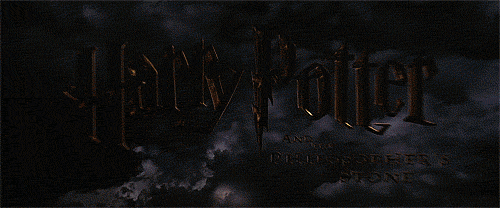




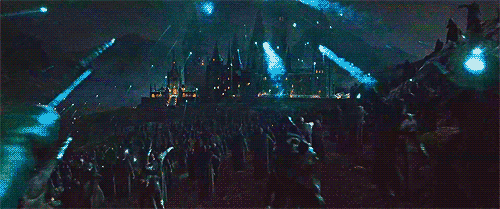
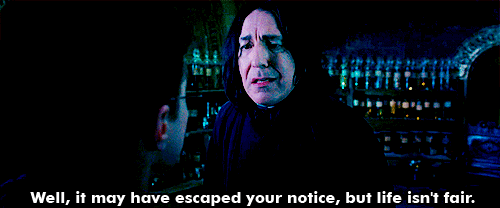

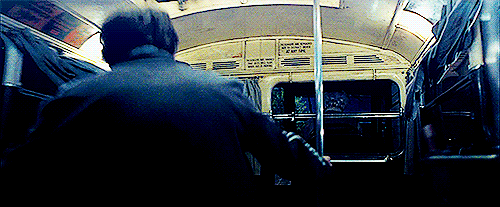

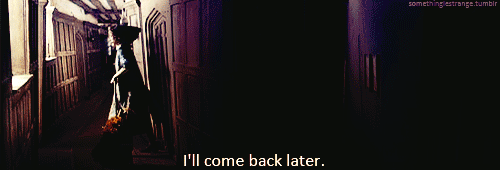



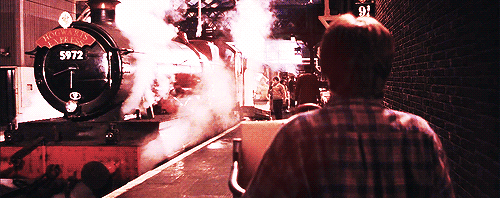

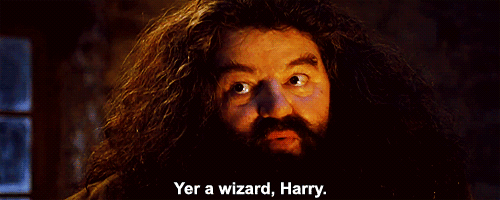

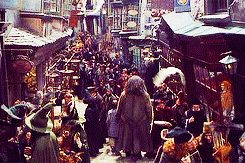







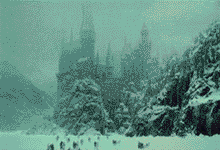

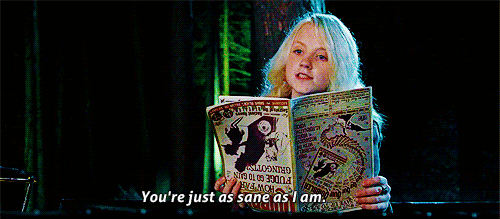



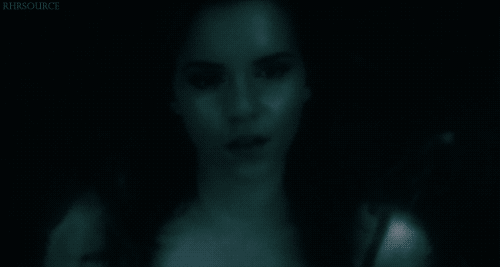
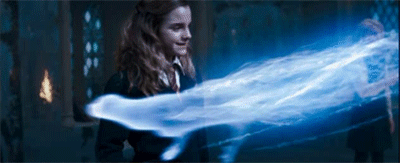


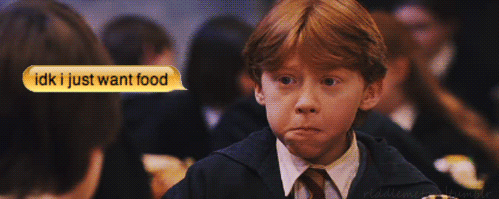

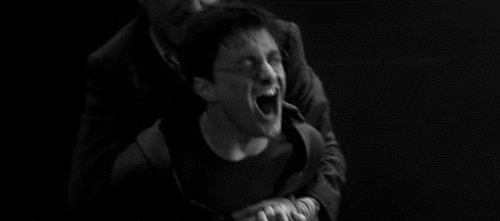
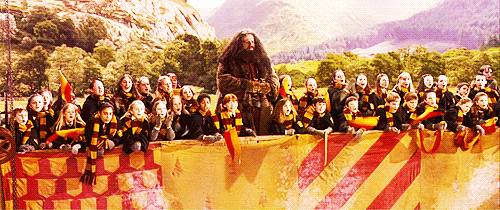

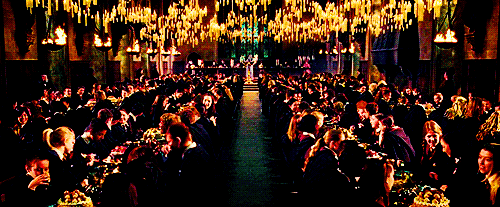

"Harry Potter and the Whisper Snake Place." I full-out cackled.
ReplyDeleteThis is great. I love that you've finally gotten to do the "Hogwarts, a History" without having to cross out the "Hogwarts," haha. I was actually late to the Harry Potter game--the first five were already out when I realised they weren't sacrilegious and finally caught up.
Besides the insane world-building and the humour, my favourite thing about the series is the way Rowling can take minor side characters and effortlessly give them so much depth. By the end of the series, we've gotten to know this rich, diverse range of people--so many characters. But they never blur together or overlap, and they all feel so real. Take the way the fandom has taken the scant information on the Marauders' teen years and run with it, filling in all sorts of details and anecdotes. It blows my mind.
Brilliant summary of my favorite series. I started the books when I was 11, and have read them 3-4 times since. I'm 17 now. Lucky for me all of the books had been published and I didn't have a wait a year in between books!
ReplyDeleteWow. This post is making me feel nostalgic. I think I'm about due for another reread.
Ally @ The Scribbling Sprite